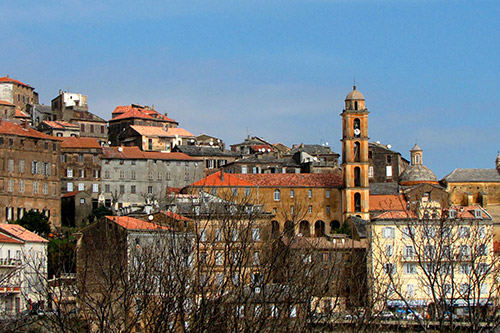You will never tire of the spectacle of the Corsican landscapes and its picturesque villages. Cervione is one of the most beautiful Corsican villages to visit.
Cervione, capital of the Costa Verde region
In the Costa Verde region, during your camping holiday in Northern Corsica, discover its capital Corsican village Cervione, this small town in Upper Corsica combines the pleasures of the sea and the mountains. It is located not far from Valle-di-Campoloro, about fifty kilometers from Bastia, at an altitude of 350 m. It extends to Prunete beach on the eastern coast of the island.
Tourists appreciate the beauty of its historical and natural heritage and like to enjoy the sun and the surrounding beaches. You will not resist this soft and warm atmosphere of this authentic Corsican village.
The Corsican commune owes its name to the ancient presence of large deer which once occupied the territory. Cervione developed from the 2nd century under the presence of the Mariani tribe. According to legends, the village was founded by populations fleeing the coast, invaded by the Saracens in the Middle Ages.
A place steeped in history, Cervione welcomed one of the main characters in the history of Corsica: its one and only king, Théodore de Neuhoff. He also decided during his reign that Cervione would become the capital of the island.
Several of its buildings are classified as Historic Monuments: the Saint François convent (dating from the 16th century); Saint-Erasmus Cathedral. The latter is one of the first in Baroque style that can be found in Corsica.
Since the beginning of the 20th century, Cervione has stood out for the production of hazelnuts, which obtained an IPG (Protected Geographical Indication) a few years ago.
Visit the hilltop villages of Corsica: Cervione
Cervione is accessible from the T10 which runs along the coast. Just take the D71 which goes up to the village. On foot, go up one of the streets or alleys, it goes up a little. Once at the top, take a downhill alley, you will be in front of the magnificent Saint-Erasmus Cathedral, renovated and superbly adorned with its orange color ! The ethnographic museum of popular arts and traditions is located just behind the cathedral.
Also visit its 16th century Franciscan convent and the remarkable natural site of Scupiccia with its Chapel of the Madonna.


